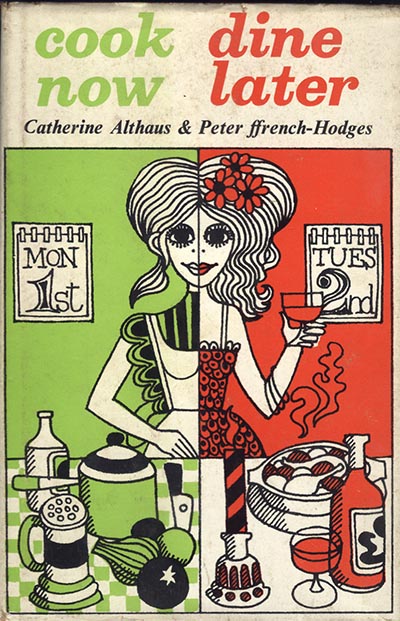I have always been a keen book collector, so my cook book collection began to grow arms and legs as I added older first editions and rare books to my collection. I began to cover the globe, buying cookbooks on Chinese, Persian, Alaskan, Thai, Tibetan, South American: food from everywhere and all times, really. I began to move backwards in time, getting hold of 19th century and eventually 18th century originals. I bought most of the cookbook bibliographies, so that I could find out what books to search for.
Cookbooks are an excellent reflection of the time that they were written in: they are constrained by fashion, availability of ingredients, transport and equipment: some of the earliest cookbooks contain a list of places where they could be bought.
Here is the frontis from my oldest cookbook by Hannah Glasse:
 |
| Frontispiece from Hannah Glasse, 1755 |
In my earliest cookbooks, one of the stand-out features is the absence of foods from the New World. No potatoes, tomatoes, capsicums, maize, chillies or aubergines. I would very much like to see an Italian cookbook of the same time, since we always connect (perhaps not entirely correctly) Italian food with tomatoes. A Scottish cookbook from 1845 has potatoes, but includes a recipe for 'imitation tomato sauce' made from roasted apples coloured with turmeric. Tomatoes were originally shunned because they were widely thought to be poisonous for a long time after their introduction (I was certainly allergic to them until my early teens). I have a few American cookbooks from the 18th century, and these do contain recipes ('receipts') which use the new ingredients, so a great upheaval occurred in worldwide cookery in that 100 years.
Adoption of foods from other cultures took place very slowly, usually depending on mass migrations to enable foreign cuisines to gain acceptance. A typical example of this is the arrival of chinese recipes in english. This took place in the USA in the late 1800's, but the earliest chinese cookbook printed in England dates from 1922. One of the american books on chinese cookery contains the strangest method of measuring I have ever found. It doesn't measure ingredients by weight or by volume (a big american trend), but by price: "3 cents worth of five-spice powder". That book was out of date the day it was printed.
Another feature of more modern cookbooks is the style of images and printing:
This book shouts "1950's":
 |
| Esquire party book from 1957 |
 |
| Casserole cookery from 1969 |
Stylistically, it's interesting to note that books from the southern hemisphere seem to reflect the styles of the previous decade from the northern hemisphere.
So cookbooks tell us so much more about society than just food and recipes.
One final nuance for this foray into my cookcook collection (there will be many more) is the political perspective. I have a wonderful French cookbook from 1856 with a Russian spine-stamp on it. This book is of the highest quality (the woodcut diagrams alone would take months to produce, sample below):
 |
| Focus on the quality, not the subject |
(I do hope it doesn't say "Remaindered, 5 roubles".)
Late edit: I'm told that the label says "Writer's stall, price 6 roubles". I was close.

The quality of design and execution between your last two images is amazing. Cookery books truly are entirely of their time. I have several from the early 70s which are, at times, bizarre. An interesting post.
ReplyDelete